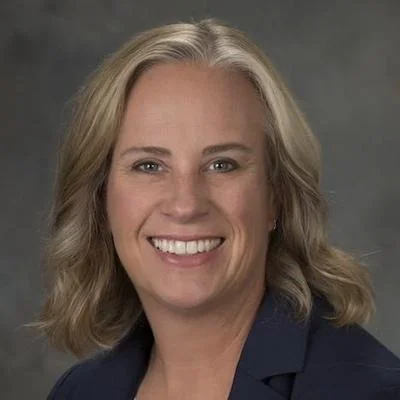Members of the Madison County Grants Committee met Thursday, July 21.
Here are the meeting minutes as provided by the Madison County Grants Committee:
MADISON COUNTY GRANTS COMMITTEE
MEETING MINUTES
July 21, 2016, 3:00 P.M.
PRESENT: B. Malone, L. Dalton, J. Kuhn, G. Glasper, A. Gorman
ABSENT: T. McRae, B. Meyer
OTHERS: J. Herzog, L. Mersinger, J. Arnold
As this was a special meeting of the grants committee, there were no minutes to approve. Ms. Mersinger reviewed the CDBG Guidelines and Competitive Project pointing.
Ms. Kuhn asked if Highland could have used CDBG funds to demolish the old hospital. Staff indicated that CDBG funds could have been used to demolish the old hospital if they pointed within funding range with the CDBG Competitive process.
The main National Objectives that we must follow are:
1) projects that benefit low/mod income persons, and
2) projects that eliminate slums and blight.
Ms. Gorman asked if we can locally change the National Objective set by HUD. Staff indicated that the National Objectives can only be change by Congress.
Ms. Gorman asked that if someone would ignore or try and change the National objective, what would happen? Staff indicated that we (Madison County) would be responsible, and would have to repay the money spent in an ineligible area back to the U.S. Treasury.
Ms. Kuhn feels that Highland has one of the highest foreclosure rates in the County. She states that Old Town is an area of smaller homes, that may only be worth $50,000.00, but because of the pride of the area she feels that people take care of their properties, and because of this, she feels that people overlook Highland as being low/mod, when in fact there could be more low/mod areas there than we think. Ms. Kuhn would like to clarify; that the statement referencing high foreclosure rates was made to demonstrate that Highland has low/mod needs.
Ms. Kuhn asked how the statistics determined to make and area Low/Mod? Staff responded that the U.S. Census releases information in regards to Low/Mod income areas through Census Track and Block Group Data. We are currently working off of the 2010 Census numbers. In addition, if an area is not Low/Mod, a community can request that an income survey be done by MCCD staff.
Ms. Dalton pointed out that the Census was done in 2010, and in that time, communities may have changed, and the Census numbers may no longer be accurate, and she feels that the income survey is a good alternative for getting an accurate reading on what is going on in the community.
Ms. Kuhn asked if foreclosures or unemployment rates of an area have anything to do with income survey’s. No they do not. When we do an income survey we are only looking at household income.
Ms. Kuhn also asked how many houses are surveyed. And that depends on each situation. First, the project area must be determined. From there, we determine how many houses are within that project area. After we determine how many households are in a project area, we will then be able to determine if we will be mailing an income survey to everyone (census), or if we will be selecting a random sample. After the sample size is determined, we will then need to collect responses from 75% of those selected. Of the responses collected, 51% or more must be low/mod in order for the area to qualify. If we are unable to get the minimum 75% response rate, even if the area is trending low/mod, we will not be able to validate the income survey, and the community will not be eligible for CDBG funding.
Ms. Dalton asked how we collect the income survey’s: three mailings and three door-to-door surveys are conducted as part of the income survey process.
Mr. Malone pointed out that public safety (fire department’s) are funded at the highest priority.
Mr. Gorman asked- is it fair to say, that without some of the larger communities throughout
Madison County, and the populations they bring to the table, without them, Madison County
might lose their entitlement status. That is an accurate assessment. Because Madison County
has a population of over 200,000 people, we are able to qualify as an Urban County, and we
received funding directly from HUD because of the population of our County as a whole.
Ms. Kuhn asked if the Federal Government comes in and check to make sure that we are
following guidelines and we are doing what we say we are doing- linking back to the
applications submitted by communities? Yes. The Federal Government requires us to submit
annual reports to them that detail what we do with the allocations. In addition, HUD monitors us
to make sure we are spending Federal dollars correctly. We are also subject to annual audits
from our auditor. We have to demonstrate to HUD that we have an application process, and
further, that we follow the application process. If money is spent incorrectly, or the application
process was not followed, we would be required to repay money back to the Federal
Government.
Ms. Dalton and Mr. Malone are worried that the flat leveraged amount could be preventing
smaller communities from receiving funding, because they just cannot afford to leverage at the
25% mark. Staff proposed that perhaps we should have a tiered leveraging solution, so that the
smaller communities have the opportunity to get additional points, but they have to spend less in
leveraging, and larger communities would have to leverage more to get the same points. This
would be more in line with a community’s population and budget.
Mr. Malone pointed out that all of the CDBG funds could disappear, and funding has shrunk
over the past few years, and it is imperative that communities do not think of CDBG as a source
of revenue, or parts of their budgets.
Ms. Kuhn asked when it comes to bridges, does the transportation of Planning and Development
Department get involved? That depends. Depending on where a bridge is at, the community
could, if eligible team up with the County Highway Department. Sometimes they work with
communities and they supply the manpower, if the community can come up with the cost of
materials. Planning and Development would not be an applicable funding source.
Ms. Gorman asked for clarification on bridges. Funds can be used to replace a bridge, but if
there is a bridge in terrible disrepair they won’t rehab it? A bridge can be rehabbed. However, it
is on a case by case scenario. Many factors go into determining if a bridge is repaired or
replaced. And it starts with what was the original bridge made from? Some of the older bridges
that had been replaced were made of wood, and they were replaced simply because they were not
stable, and could not hold the weight of today’s vehicles. This is done completely on a case by
case basis.
Ms. Dalton asked if communities submitting projects through the competitive process needed to be shovel ready. Projects submitted through this system don’t necessarily need to be shovel ready. Communities are informed in June that they will be receiving a grant, and they have until October to get the engineering for the project done. So they have several months after being awarded the grant to get the project shovel ready.
Ms. Dalton asked if we give grant dollars directly to the communities. We do not. MCCD directly makes payment to the contractors on behalf of municipalities receiving the grant.
Ms. Kuhn asked if we have to agree with bids for project like demolitions. Yes. MCCD follows county procurement, and the lowest responsible bidder is chosen for each project.
Mr. Malone thought the 3 items that needed to be dealt with concerning the CDBG allocation process:
1. Higher income communities- we have addressed this during the meeting.
2. Public safety should be scored higher- this is already a high priority.
3. How do you break a tie? This is the committee’s, elected officials, responsibility to break the tie.
Ms. Dalton asked about Homeland Security funding for the possibility getting East Alton funding for a new fire truck. However, the SAFERS grant is to staff a fire house, and the equipment grant is for only $27,000.
Ms. Gorman asked about instances when we would fund the building of fire stations. For the building of fire stations, we have worked to build a new station because their fire station was not large enough to house their apparatus. Second, we have helped rehab a dilapidated fire house because the exhaust was leaking throughout the rest of the City Hall. In addition, their fire station was literally crumbling and leaking, and this is what type of repair/or builds would be for. Mr. Malone would like Mr. McRae and Mr. Meyer get this info.
Mr. Malone would like to have questions about this presentation at the next grants committee. However, we will not be acting on anything until we have further direction from the August 2016 Grants committee meeting.
Ms. Kuhn suggested that this presentation be presented at a future county board meeting. For additional information regarding the actual CDBG Competitive process and CDBG regulations, please reference the attached CDBG Application Pointing and Guidelines, as of
7_21_2016.
ADJOURNMENT:
A motion to adjourn was made by A. Gorman, second by G. Glasper. Motion approved unanimously.




 Alerts Sign-up
Alerts Sign-up